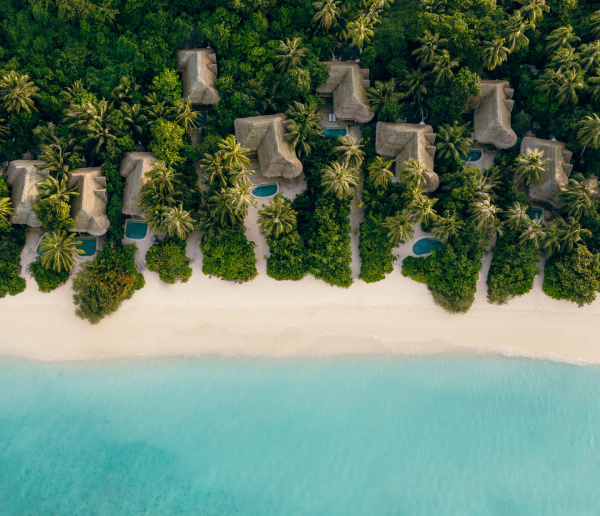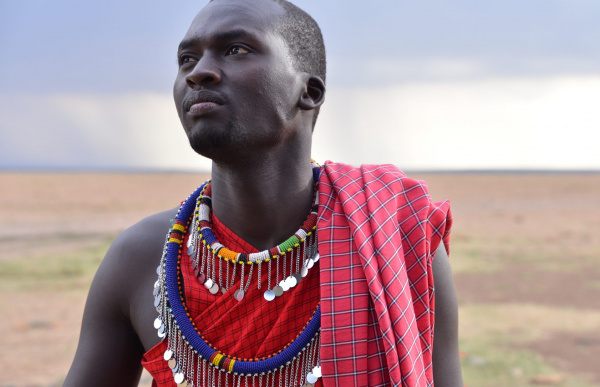
Mara Naboisho Conservancy, Masai Mara, Kenya
- Culture
Why the future of travel is regenerative
A regenerative way to travel
By Maria Noakes
After yearning for it for so long, travel is back, but not necessarily as we knew it.
Granted we may have the freedom to venture overseas again, many travellers are carefully considering the social, cultural, environmental and economic impacts of an international sojourns, demanding more from the resorts and hotels they visit.
Sustainability is no longer good enough, for next-gen travellers the future is regenerative.
The regenerative travel movement has been rapidly gathering momentum with consumers and the tourism industry is increasingly adopting regenerative practices to meet demand.
What is regenerative travel?
So what exactly is regenerative travel and how does it differ from sustainable travel?
According to Tess Wilcox the Director of Slojourn Studio, a marketing agency for luxe travel brands, the terms refer to two slightly different – albeit interconnected – concepts.
“From what I’ve seen and experienced, sustainable travel prioritises the prevention of further damage to the environment, whereas regenerative travel takes a more nuanced approach to future-proofing ecosystems and local environments. It does this by implementing rejuvenating practices and embracing new technologies and innovations that seek to not only mitigate the impacts of humans and climate change, but that will change the trajectory of the travel industry and health of the planet.
“In my mind, sustainable travel is about protecting the here and now, and encouraging people to ‘leave only footprints behind’. Regenerative travel goes a step further (to extend the metaphor) and motivates people to do whatever they can to leave a destination better than they found it, to regenerate it.”
But according to Justin Francis, co-founder and CEO of activist holiday company, Responsible Travel we shouldn’t get too caught up in terminology.
“Travel can be a wonderful force for good. These terms (sustainable travel and regenerative travel) are really all part of the same movement to make that happen. I think sometimes we get bogged down in semantics – it’s important these aren’t seen as competing agendas.
“‘Responsible’ tourism is about creating better places to live in and to visit – ‘regenerative’ shares that ambition, and so on. What matters is the substance behind the term. Does the holiday help to not only minimise the negative impacts of travel, but maximise positive ones – does it benefit local communities, cultures and nature?
“I do think all of us must move from general aspirations around benefitting nature and local communities to specific time-bound goals – for example to become nature positive by 2030 or reduce CO2 emissions per passengers 55 per cent by the same date – in line with the global goals for carbon and nature. We must identify the most important things that we can do to reach these goals, act on them, and start to measure and report on progress.”
Regenerative travel is more than just eschewing plastic and encouraging guests to reuse towels. Brands operating regeneratively look at their operation holistically and ensure every department and touchpoint is earth focused.
“Some examples that come to mind are travel brands that are implementing innovations such as coral propagation (something that’s huge and proving to be really successful in places like the Maldives); the use of 3D printing technology in the construction of hotels and resorts; and achieving carbon positive status,” Tess says.
A richer experience
Importantly regenerative travel offers a much richer, more enjoyable experience for travellers and the communities they visit.
“Responsible tourism is also about benefiting local communities, traditions and cultures. By staying in small local-owned accommodation, employing local and indigenous guides, eating in local restaurants, you’ll enjoy a much more authentic experience too,” Justin says.
“When you travel, you become a guest in someone else’s home. When you treat that environment and community with respect and your stay is locally beneficial, you get closer to the people, culture and nature. You get the local insights and experiences you just don’t go on a big cruise liner or big brand package holiday. It’s a win-win.’’
How to lessen your carbon footprint when you travel
No holiday with a flight is ‘carbon neutral’ – offsets don’t ‘undo’ the impacts of a flight: we can only tackle climate heating by reducing carbon and restoring nature.
“There’s no escaping the damage flights do – or that we must take fewer of them. On the flip side, responsible tourism can and does play a valuable role in conservation and rewilding. So we advise three things: fly less – instead stay in destinations longer – and, if you do have to fly, make your trip count,” Justin says.
Justin’s top tips for responsible travel
- Rather than multiple short trips, take one longer holiday. It means fewer air miles, more money in local hands and you’ll have a better time, too. Then, if you can, keep shorter trips close to home or travel via rail, bus or boat.
- You can also take steps to reduce your carbon and help nature as you travel. Booking a wildlife holiday or visiting a conservation project helps make the wider case to use income from nature tourism to rewild more land.
- And next to flying less, the best thing we can do to reduce our holiday footprint is to eat more plant-based, seasonal, local produce – and limit food waste. Try to stay in accommodation that uses renewable energy and do as you’d do at home: be conscious of water use and air-con, and ditch the plastic.
Regenerative travel destinations
B&B SELF DRIVE TOUR OF TASMANIA
Australia’s mangroves and seagrasses absorb up to 20m tonnes of carbon per year, yet when damaged this carbon is released. Globally, vegetated coastal ecosystems are being lost twice as fast as tropical rainforests, yet they can absorb carbon up to 40 times faster. On this holiday you’ll be travelling with a tour operator which donates 5 per cent of profits annually to the Tasmanian Land Conservancy, which protects otherwise unprotected areas of key habitat by creating reserves on private land. Areas supported include the Big Punchbowl, a very significant chain of wetlands on the Tasmanian east coast.

Soneva Maldives and Thailand
The luxury Soneva resorts are committed to greater environmental accountability and addressing the problems the planet faces today. This is championed through the Soneva Foundation that supports the development of projects that have a positive environmental, social and economic impact.
Some of the Soneva Foundation’s projects include Care for Children, Action Against Hunger, Soneva Forest Restoration Project and Myanmar Stoves Campaign.

Mara Naboisho Conservancy, Masai Mara, Kenya
Three-quarters of African lion populations are in decline, driven by trophy hunting, poaching, habitat loss, and increased human-lion conflict as agricultural and grazing land encroaches into lion territory. On this safari holiday you will be staying on land leased from 500 Maasai landowners for tourism purposes, with a company that works in partnership with the community. The project has rejuvenated, and now conserves a vital migration corridor between the Masai Mara National Park and the Loita Plains used by several hundred thousand animals. The lease fees provide a sustainable income in harmony with wildlife as well as funding education and training facilities.

Blue Apple Beach Caribbean
This luxe Caribbean escape employs local people where it can and provides subsidised English lessons and interest-free loans to its staff members. 90% of its staff are from under-represented groups. In 2018, the hotel created the Green Apple Foundation, a non-profit dedicated to changing the way waste and natural resources are managed by the hospitality industry in Cartagena. Green Apple currently runs a glass and food waste collection service that has diverted over 90 tons of glass and food waste from landfill. Its glass recycling operation transforms bottles into building-grade sand while food waste is turned into nutrient-rich compost.

RELATED: Dreaming of eco family travel
RELATED: Georgia Hopkins followed her heart and this is what happened
